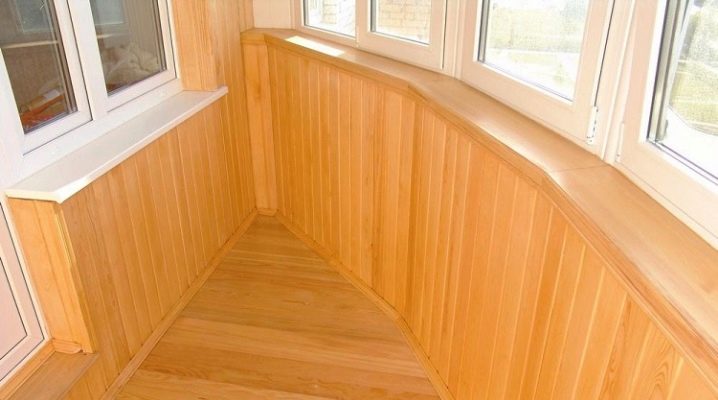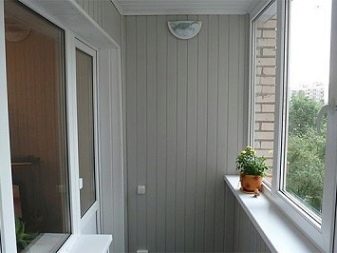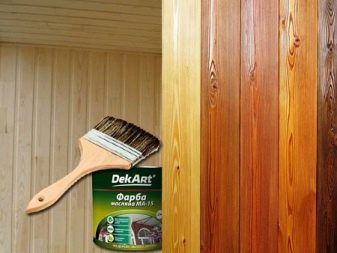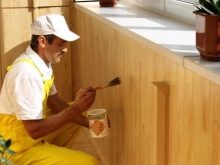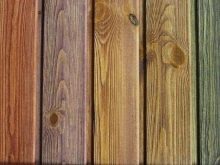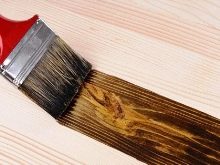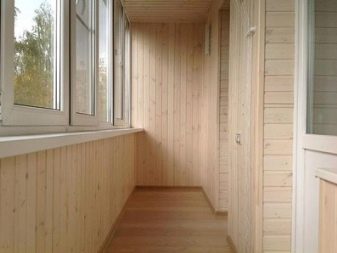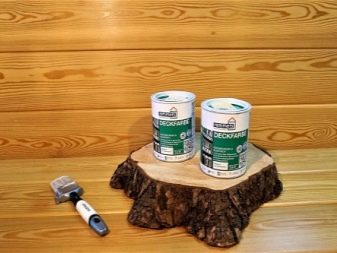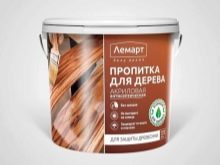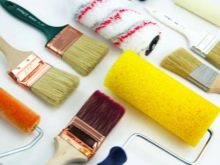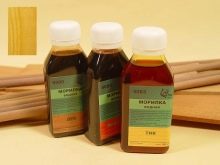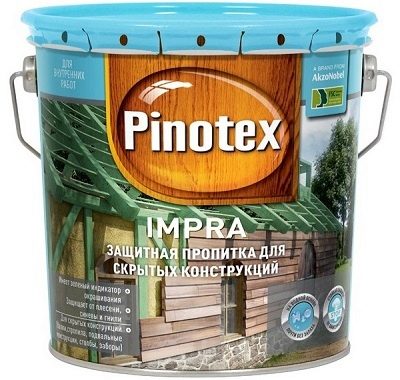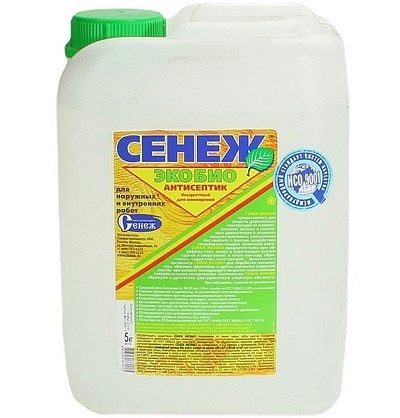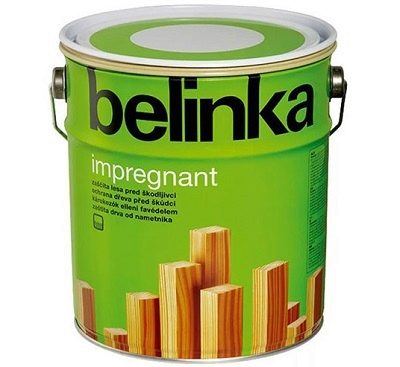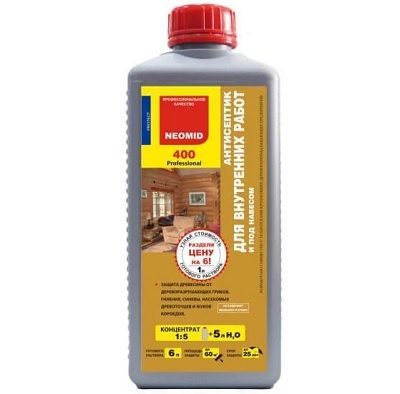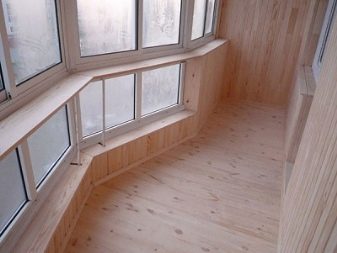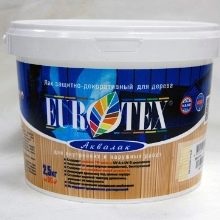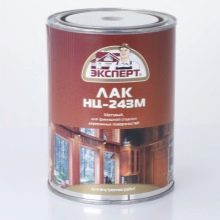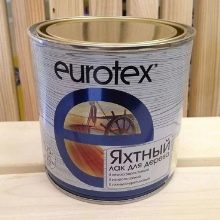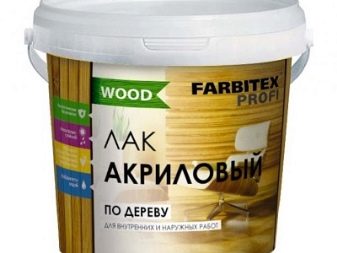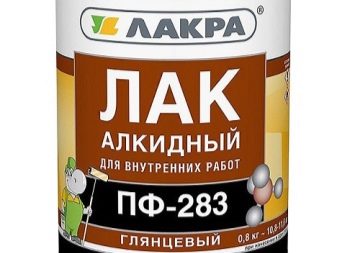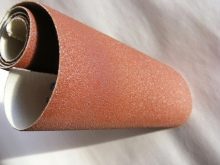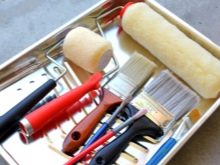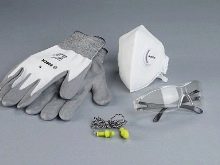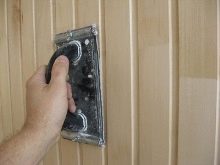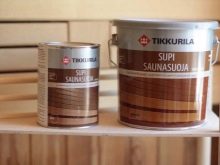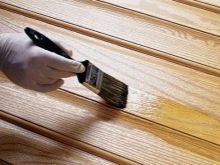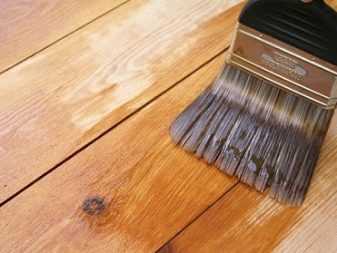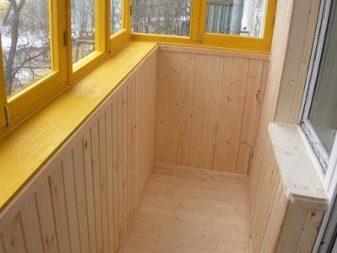How to cover the lining on the balcony and loggia?
For finishing the balcony, the lining is a familiar material. And it looks convincing, and is mounted without any particular difficulties, and serves for a long time. But how much this finishing material will last depends, among other things, on whether it is equipped with additional protection. The one that will resist decay and premature destruction.
Need for processing
The lining is made from natural wood. Beautiful and durable, it seduces the buyer who is thinking about the facing of the balcony. The material is "breathable", which creates a favorable microclimate on the balcony area. But if you do not saturate the lining with a special composition, negative factors can reduce its service life.
Why is it also important to process the lining:
- change in appearance - with the help of impregnations and primers, the material can change the shade, which has a beneficial effect on the visual transformation of the balcony;
- not only the outer part of the lining is processed, but also internalso that the processes of decay do not start from the inside;
- with dampness on the balcony untreated finishing material rapidly deteriorates.
It turns out that processing solves not one problem, but several. And the fact that you can change the shade of future walls only adds points to the procedure. The effects that are created after impregnation look impressive. The lining is especially afraid of ultraviolet radiation, the sun is that aggressive external factor that oppresses the material.
If you draw a parallel with a person, the material will age faster. That is why impregnation is required on a balcony facing the sunny side.
The choice of impregnation
The impregnation composition is a chemical compound that penetrates deeply into wood fibers, organizing local protection from external influences. The structure of the impregnation concentrate disinfects and shows resistance to fire. These impregnating compounds create an invisible film on the lining and actually change the composition of the material. If an ignition occurs (alas, anything can happen), it is the impregnation that will be able to keep the flame, preventing it from spreading further. This means that the owners will have time to fight the fire.
Impregnations and methods of application may vary.
- Fire retardants are classified, and differ in degrees of protection. For example, the first category includes compositions in which the concentration of the antiseptic is higher, and the second - with a lower concentration.
- The most effective type of impregnation is that carried out with high-tech equipment. When a special substance is applied to the surface of the lining under high pressure and even higher temperature, the coating is perfect. And then it is enough to dry the lining at room temperature for one day.
- You can also apply impregnation to the wood product by immersing it in an antiseptic using hot-cold baths. First, the lining is immersed in a hot bath for 2 hours, then in a cold one for the same time. After that, the material dries up by itself.
- But the home method, of course, is much more affordable. And it needs a brush, roller, spatula or spray gun.
- When choosing a composition, the conditions in which the finish is used are taken into account... The balcony, although it is located on the facade of the building, does not apply to external premises. If it is glazed, if the cladding is not threatened by precipitation, sudden changes in humidity and temperature, you can use solutions intended for internal work.
- The simplest type of impregnation is stain. The budget product is sold on water and oil base, on acrylic and alcohol base.Stains are sold in gel and powder form, as well as in a ready-made solution.
- Wax-based impregnations will be a good protection against putrefactive processes, and they tolerate high air humidity without any complaints. The wax forms a thermal protective film on the surface of the lining, due to which the surface of the cladding becomes dull.
- In a harsh climate, impregnations are excellent, that is, they are not afraid of high humidity and temperature fluctuations. For example, in saunas, the lining is also protected by impregnations.
You can cover the cladding with a special compound yourself. But first, you need to choose an antiseptic that best matches the wooden surface and strengthens it.
Antiseptic overview
It is safe to call a wide range of antiseptic agents, but among them there are the most popular ones, which have repeatedly confirmed their high class.
- Pinotex Impra - liquid for interior work is made on a water basis, contains several highly concentrated additives that prevent the wood from succumbing to mold, rot, and blue. This product is distinguished by high penetrating ability, confident moisture resistance, lack of smell in principle and pronounced fungicidal properties. If the temperature has reached +5, and the ambient humidity is 80%, you can treat the lining with this tool. First you need to mix it well, apply the first layer with a brush, dry it for at least 3 hours, and apply the second layer.
- "Senezh Ecobio" - with this colorless economical antiseptic they protect wood from mold, reliably protect it from blue, rot and insect attacks. It is actually used only for internal work. It is characterized by high permeability, excellent fungicidal properties, preservation of the woody "breathing" structure, as well as a particularly valuable ability to stop damage to wood that has already arisen.
- Belinka Impregnant - this antiseptic primer also has no color, it is an excellent prevention of fungus and blue stain on the tree. She will also protect the lining from woodworm. If high humidity is recorded on the balcony, the choice of this tool is accurate. You need to work with him wearing glasses, a respirator, and protective clothing. It will take more than one day to apply, because there should be 12 hours of drying between layers.
- Neomid 400 - this is the name of a new generation concentrated product that protects the tree from the woodworm beetle, from rotting processes, from mold. The liquid will not change the quality and texture of the lining.
If the destruction of the tree has already begun, then it is better to apply this antiseptic and stop the progression of the destruction.
The layman may have a fair question: why antiseptic treatment, because natural material is processed by the chemical composition. But this measure is required. In growth and development, the tree gains moisture, and when it ends up on the sawmill, in production (in a word, after life), the inorganic compounds of the wood become organic, which is helped by fungi. Of course, this requires conditions, that is, certain humidity and air temperature.
There are wood-staining fungi, and there are wood-destroying ones. The former are not dangerous for the wood structure, they simply change the color of the wood to brown or blue, for example. But rot can be hidden under the new color. But rotting is a direct result of the activity of wood-destroying fungi. And in order not to give them a chance to attack, the wood is dried in production, and already when it becomes the facing of the same balcony, it is impregnated with antiseptics.
Additional protection
Some antiseptics (almost all) exclude subsequent paint application. Therefore, in addition to colorless options, pigment compositions are also used to darken the lining or acquire a new shade.And if you do not want to radically change the color, the lining is varnished - this is no longer the most environmentally friendly composition, but it helps to protect the tree from damage and last even longer.
A water-based varnish is probably the best option. This product is non-toxic, fireproof, and gives a light and strong bond to the base. Varnish can be matte or glossy - the first option is more in demand today.
So that the wood does not darken over time, a varnish with high UV resistance is selected.
Characteristics of varnishes:
- acrylic retains the natural color of the wood, is easily diluted with ethers, alcohols or water (depending on the type);
- alkyd varnish gives a stable coating, but has a pungent odor and dries for a long time;
- polyurethane foam varnish is used both indoors and outdoors, is moisture resistant, provides protection from intrusive sunlight and chemicals, expensive;
- aquatic varnishes are completely odorless, delight with quick drying, and are most preferable from the point of view of environmental friendliness.
The application of varnish involves the creation of 2 layers, which will enhance the protective properties. The color of the varnish is not so important, but for those who like changes, some compositions can be tinted at all, controlling the final color of the lining on the loggia.
Application instructions
After the material is selected, you need to prepare the tools for work, and determine the right day for this.
Of the tools come in handy:
- paint brushes, tray;
- roller with replaceable handles;
- bucket;
- fine-grained sandpaper;
- gloves, goggles, respirator if necessary and suitable clothing for work.
It is better if the lining is processed before installation on the balcony walls. After all, the material should be impregnated from the inside too, this is the only way to guarantee reliable protection.
We will consider in more detail how to perform processing.
- First, the wood surface needs to be cleaned... The tree is cleared of dirt and dust, possible irregularities and, if any, fungi. It is convenient to do this with a brush, steel or hair.
- When cleaning is complete, the surface processed with sandpaper with fine grain.
- It's time to use antiseptic... This can be done with a roller, spray or brush, depending on personal preference and the consistency of the impregnation.
- You need to apply an antiseptic to the lining thin even layer... All recesses and corners must be impregnated, not overlooked.
- The lining must dry completely, during the drying process, the material should not come into contact with each other.
- If used as an impregnation wax, first it is applied to a specific area, and then it is absorbed into it with a soft cloth. Rubbing in until full penetration. The wax is applied in several layers.
- The specific scheme for applying impregnations is universal - processing begins from one of the corners, and so the brush or roller moves along the perimeter of the cladding. If a roller is used, it is rolled from left to right, and then vice versa. The grooves are painted over with a brush.
- If you put a lot of composition on the instrument, there will be drips.
- Even if it is written that the impregnation dries quickly, further work on the balcony should not be carried out earlier than 2-3 days later.
If it is decided to paint the composition, for example, with white paint, an antiseptic is used as a primer prior to the finishing layer.
If the balcony has heating in one form or another, all repair work is easier and more logical to carry out in a warm season, when natural drying and good air ventilation will be available to the treated surfaces.
